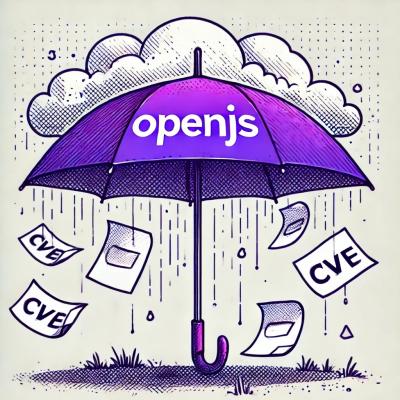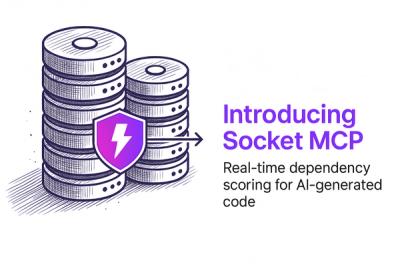


appknox-python
Command-line interface & Python wrapper for the Appknox API.
Python API documentation is available here.
Installation
appknox-python is officially supported on python 3.5 & 3.6. pip is the recommended way to install appknox-python.
pip install appknox
Usage
$ appknox
Usage: appknox [OPTIONS] COMMAND [ARGS]...
Command line wrapper for the Appknox API
Options:
-v, --verbose Specify log verbosity.
-k, --insecure Allow Insecure Connection
--help Show this message and exit.
Commands:
analyses List analyses for file
files List files for project
login Log in and save session credentials
logout Delete session credentials
organizations List organizations
projects List projects
recent_uploads List recent file uploads by the user
report Download report for file
upload Upload and scan package
switch_organization Switch organization in CLI instance
vulnerability Get vulnerability
whoami Show session info
reports list Show the list of reports for a file
reports create Creates a new report for a file
reports download summary-csv Downloads the report summary in CSV format
reports download summary-excel Downloads the report summary in Excel format
Authentication
Log in to appknox CLI using your secure.appknox.com credentials.
$ appknox login
Username: viren
Password:
Logged in to https://api.appknox.com
Using Environment Variables
Instead of login we can use environment variables for authentication. This will be useful for scenarios such as CI/CD setup.
$ export APPKNOX_ACCESS_TOKEN=aaaabbbbbcccddeeeffgghhh
$ export APPKNOX_ORGANIZATION_ID=2
$ export HTTP_PROXY=http://proxy.local
$ export HTTPS_PROXY=https://proxy.local
Supported variables are:
APPKNOX_ACCESS_TOKEN | Access token can be generated from Appknox dashboard (Settings → Developer Settings → Generate token). |
APPKNOX_HOST | Defaults to https://api.appknox.com |
APPKNOX_ORGANIZATION_ID | Your Appknox organization id |
HTTP_PROXY | Set your HTTP proxy ex: http://proxy.local |
HTTPS_PROXY | Set your HTTPS proxy ex: https://proxy.local |
Data fetch & actions
organizations | List organizations of user |
projects | List projects user has access to |
files <project_id> | List files for a project |
analyses <file_id> | List analyses for a file |
vulnerability <vulnerability_id> | Get vulnerability detail |
owasp <owasp_id> | Get OWASP detail |
upload <path_to_app_package> | Upload app file from given path and get the file_id |
rescan <file_id> | Rescan a file (this will create a new file under the same project.) |
reports list <file_id> | Lists all the reports associated with the file |
reports create <file_id> | Create a new report for the file and returns report ID |
reports download summary-csv <report_id> | Outputs the report summary in CSV format |
reports download summary-excel <report_id> | Outputs the report summary in Excel format |
Example:
$ appknox organizations
id name
---- -------
2 MyOrganization
$ appknox projects
id created_on file_count package_name platform updated_on
---- ------------------- ------------ ----------------------------- ---------- -------------------
3 2017-06-23 07:19:26 3 org.owasp.goatdroid.fourgoats 0 2017-06-23 07:26:55
4 2017-06-27 08:27:54 2 com.appknox.mfva 0 2017-06-27 08:30:04
$ appknox files 4
id name version version_code
---- ------ --------- --------------
6 MFVA 1 6
7 MFVA 1 6
$ appknox reports list 4
id language
---- ------
1 en
2 en
$ appknox reports create 4
3
$ appknox reports download summary-csv 3
Organization ID,Project ID,Application Name,Application Namespace,Platform,Version,Version Code,File ID,Test Case,Scan Type,Severity,Risk Override,CVSS Score,Findings,Description,Noncompliant Code Example,Compliant Solution,Business Implication,OWASP,CWE,MSTG,ASVS,PCI-DSS,GDPR,Created On
1,1,MFVA,com.appknox.mfva,Android,1.1,1605631525,51,Broken SSL Trust Manager,Static,High,,6.9,"BluK8lNUoeHkNxZ3GVrKN9BP2
NVWmfbtHDiJBOTbOEpCnsbMhc6T31t...(Truncated)
$ appknox reports download summary-csv 3 --output /path/to/output/report_summary.csv
<No output: This command will download the report summary to given output path>
Using Proxy
Appknox client and CLI both supports HTTP and HTTPS proxy. While using the client, if you need to set-up a proxy then please follow the example below
from appknox.client import Appknox
client = Appknox(
access_token="Your-Access-Token", # This is your access token which you can get from developer setting
https_proxy="http://proxy.local", # Use https_proxy by default since cloud server connects to https service
insecure=True, # Use insecure connections, because proxies might have their own set of certificates which maynot be trusted
) # Insecure connections are not reccomended though
To use it in CLI example:
$ export HTTPS_PROXY=http://127.0.0.1:8080
$ appknox --insecure login
Username:
Note: Please avoid using --insecure flag or setting insecure=True in client, this will allow an attacker to perform MITM attack, but this might be required for proxies to work alongside.
Development
Update docs
Install sphinx-autobuild:
pip install sphinx-autobuild
Build docs:
sphinx-autobuild -b html sphinx-docs docs
License: MIT



